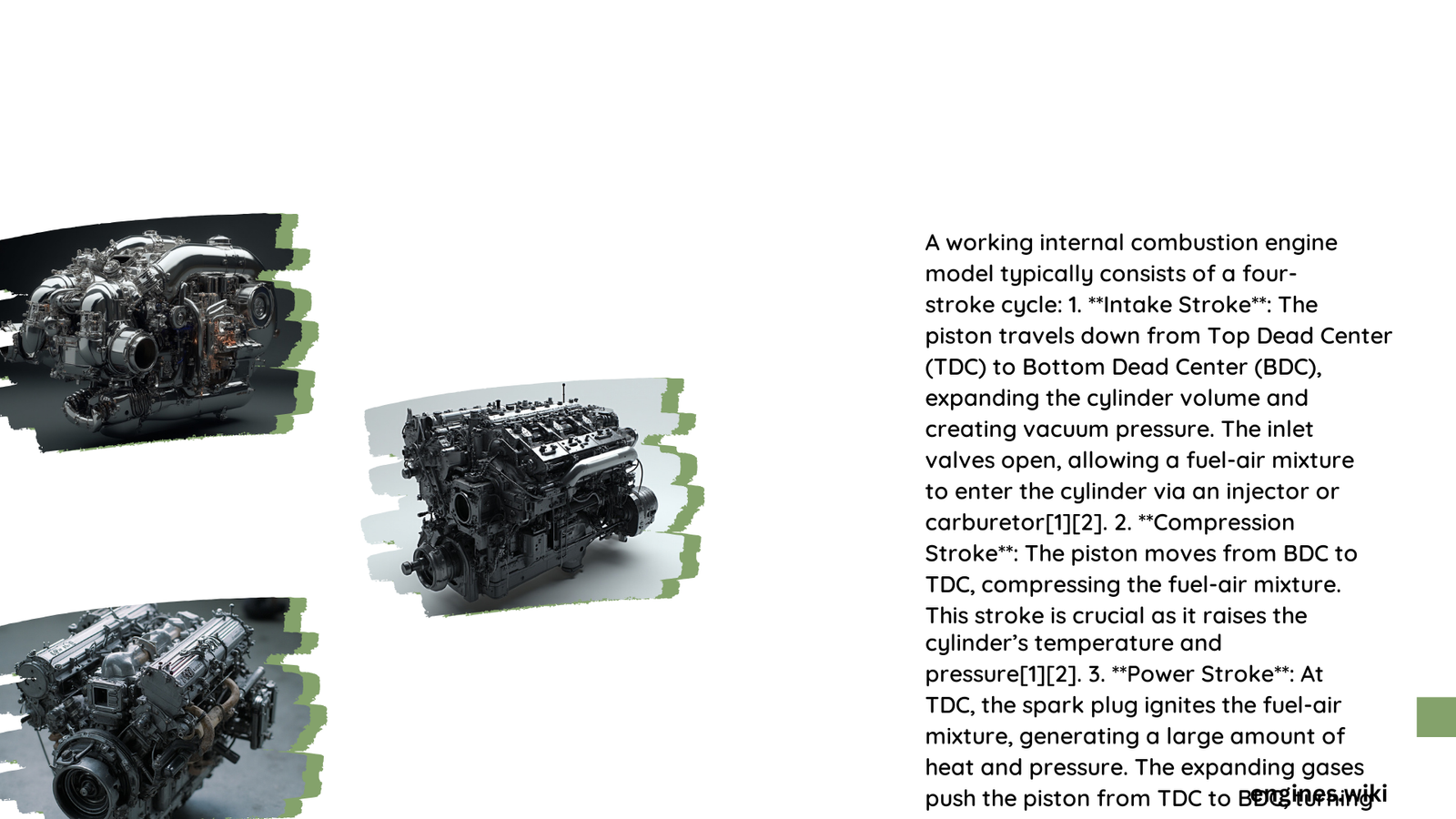An internal combustion engine model represents a sophisticated mechanical system that transforms chemical energy from fuel into mechanical power through precise, synchronized processes involving pistons, crankshafts, valves, and combustion chambers. This complex mechanism converts fuel’s potential energy into rotational motion by executing a series of precisely timed thermodynamic transformations within cylindrical chambers.
What Makes an Internal Combustion Engine Functional?
How Do Engine Components Interact?
Internal combustion engines operate through intricate interactions between multiple mechanical components. Let’s explore these critical relationships:
Piston Dynamics
- Movement Mechanism: Pistons reciprocate vertically inside cylinder walls
- Energy Conversion: Transforms chemical energy into mechanical motion
- Sealing Function: Piston rings prevent gas leakage and manage thermal transfer
Crankshaft Transformation
| Component | Function | Characteristics |
|---|---|---|
| Main Bearings | Support rotational movement | Low-friction design |
| Connecting Rods | Link pistons to crankshaft | Converts linear to rotational motion |
| Rotational Axis | Central power transmission point | Determines engine’s mechanical efficiency |
What Happens During Combustion Cycles?
Intake Phase
- Air-fuel mixture enters combustion chamber
- Intake valve opens
- Piston moves downward, creating vacuum
- Typical compression ratio: 8:1 to 10:1
Compression Stage
- Both intake and exhaust valves close
- Piston compresses air-fuel mixture
- Increases temperature and pressure
- Critical for efficient energy release
Power Generation
- Spark plug ignites compressed mixture
- Rapid gas expansion drives piston downward
- Generates primary mechanical energy
- Determines engine’s power output
Exhaust Elimination
- Burned gases expelled through exhaust valve
- Piston pushes remaining combustion products out
- Prepares chamber for next combustion cycle
How Is Combustion Efficiency Maximized?
Fuel-Air Mixture Optimization
- Ideal stoichiometric ratio: 14.7:1 for gasoline engines
- Precise mixture control reduces emissions
- Advanced fuel injection systems enhance performance
Thermal Management
- Combustion temperatures range: 1,500°C to 2,500°C
- Material selection critical for heat resistance
- Cooling systems prevent mechanical failure
What Determines Engine Performance?
Design Considerations
- Combustion chamber geometry
- Material selection
- Valve timing mechanisms
- Compression ratios
Performance Metrics
- Horsepower generation
- Fuel consumption efficiency
- Emissions control
- Mechanical reliability
Advanced Engineering Techniques
Modern Innovations
- Electronic fuel injection
- Variable valve timing
- Turbocharging
- Hybrid integration strategies
Technical Specifications
Engine Model Parameters:
- Displacement: 1.5L - 6.0L
- Compression Ratio: 8:1 - 22:1
- Fuel Types: Gasoline, Diesel, Alternative
- Cooling: Liquid or Air-cooled
Conclusion

Understanding the working internal combustion engine model reveals a marvel of mechanical engineering, transforming chemical potential into precise mechanical motion through synchronized thermodynamic processes.
